Author Archive
Steps Your Hospital Can Take to Improve Patient Outcomes
Wednesday, June 22nd, 2022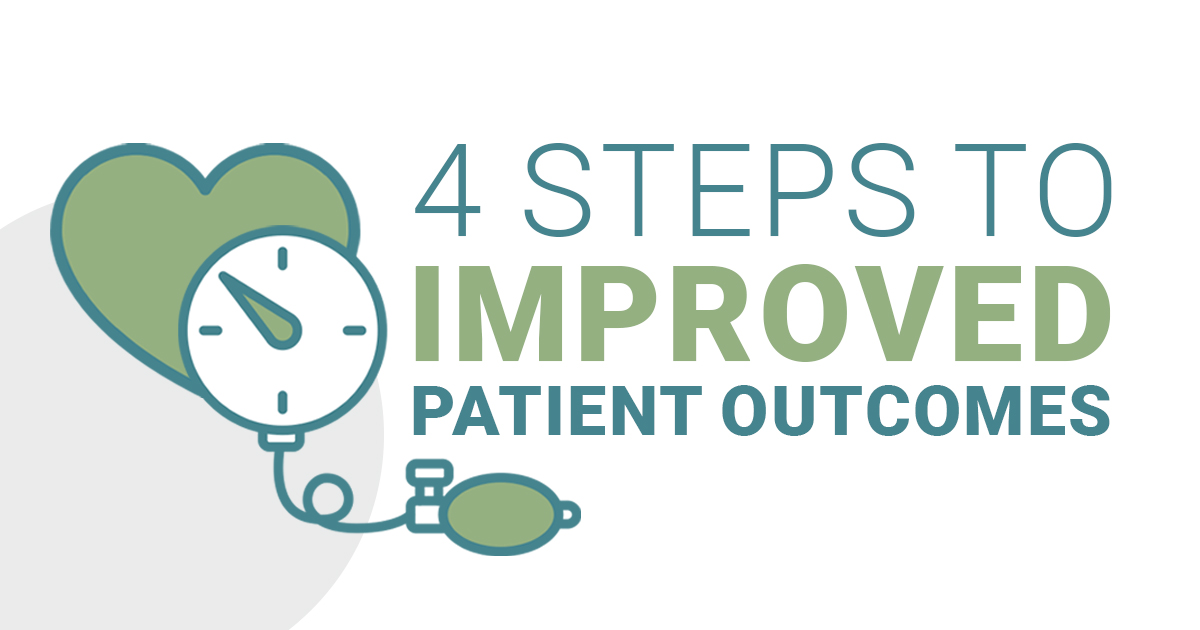
One in four Medicare patients experienced harm during their hospital stays over the course of a month in 2018, according to a new report from the U.S. Department of Health and Human Services Office of Inspector General.
The report, the follow up to a 2010 study, sought to update the national incidence rate of patient harm events, calculate a new rate of preventable events and update the cost of patient harm to the Medicare program.
Below we review the report’s methodology, findings, the OIG’s recommendations, as well as steps hospitals can take to improve patient outcomes and safety in their facilities.
The study’s methodology
For the study, the OIG reviewed medical records of a random sample of 770 Medicare patients that were discharged from acute-care hospitals during October 2018.
The OIG conducted a two-stage medical record review. In the first stage, nurses screened records for possible patient harm events using a “trigger tool” method – a trigger is a clinical clue (such as a documentation of a fall) that may indicate harm. Nurses also reviewed present-on-admission indicators in Medicare claims data to identify harm that developed after the patient was admitted. In cases where patients were readmitted within 30 days of discharge, the nurse reviewers automatically referred the records to the next stage of review, regardless of whether harm was identified.
In the second stage, physicians reviewed records flagged by nurses as containing possible harm events. They identified harm events and assessed the severity of the events, whether they were preventable and the factors that contributed to the events.
Medication harm most prevalent
The study covered both adverse events and temporary harm events in their review of patient harm. For the purposes of this study the OIG defined adverse events as events leading to longer hospital stays, permanent harm, life-saving intervention or death. Temporary harm events were defined as events requiring intervention but did not result in long-lasting harm, prolonged hospital stays or require life-sustaining measures. Of the 25 percent of patients in the study that experienced harm, the division between adverse events and temporary harm events was relatively even.
Of all harm events medication-related harm was most common, making up 43 percent of incidents. These incidents included patients experiencing delirium or other changes in mental status, hypotension, acute kidney injury, excessive bleeding and hypoglycemia, according to the report.
Harm stemming from patient care made up 23 percent of the reported events. This category includes skin tears, patient falls and pressure injuries, a common preventable injury that is especially costly for healthcare providers.
Other types of harm stemmed from procedures and surgeries (22 percent), including hypotension, excessive bleeding and embolisms, and infections (11 percent), including sepsis and C. diff, respiratory and surgical site infections.
Preventable harm linked to care quality
56 percent of harm events were deemed not preventable and occurred despite providers following proper procedures. There were several reasons why these events were determined as not preventable, including events where patients were found to be highly susceptible due to their health status. The physician-reviewers determined that 43 percent of harm events were preventable.
One finding underscores the importance of patient care in preventing harm events. The physician-reviewers determined that 52 percent of the events involving patient care-related harm were preventable, as compared to 42 percent of events involving medication and 25 percent of the events involving procedures or surgeries.
The OIG concluded that 23 percent of Medicare patients who experienced harm events required treatment, leading to increased Medicare costs estimated to be in the hundreds of millions of dollars.
Additional significant findings in the report related to Centers for Medicare and Medicaid Services policies that incentivize hospitals to prevent harm by reducing payments for certain hospital-acquired conditions, also known as HACs.
OIG found that because the policies use narrowly scoped lists and employ specific criteria for counting harm events, they have limited effectiveness in promoting patient safety.
The OIG said that current CMS HAC lists did not cover most of the harm events that patients in the study experienced — only five percent were on the HAC Reduction Program list and only two percent were on CMS’s Deficit Reduction Act HAC list.
Report Recommendations
The OIG concluded that addressing patient harm and promoting patient safety takes on an added urgency as hospitals continue to respond to the ongoing effects of the COVID-19 pandemic on hospital operations.
“Despite substantial action by HHS agencies and success in reducing certain types of events, patient harm remains pervasive, is often preventable, and continues to cost the Medicare program and patients,” the report said.
The OIG called on HHS leaders and agencies to work urgently to address “these persistent harm rates and promote safety in hospitals.”
To that end, the OIG issued a series of recommendations to both CMS and HHS’ research arm, the Agency for Healthcare Research and Quality, or AHRQ.
The OIG made three recommendations to CMS:
- Update and broaden HAC lists to capture common, preventable and high-cost harm events;
- Explore expanding use of patient safety metrics in pilots; and
- Develop and release interpretive guidance to surveyors for assessing hospital compliance with requirements to track and monitor patient harm
The recommendations to AHRQ included:
- Coordinating agency efforts to update agency-specific Quality Strategic Plans;
- Optimizing use of the Quality and Safety Review System;
- Developing an effective model to disseminate information on national clinical practice guidelines or best practices to improve patient safety; and
- Continuing efforts to identify and develop new strategies to prevent common patient harm events in hospitals
4 Steps to Improve Outcomes
When patients are harmed during their hospital stays, not only is it a concern of the U.S. government and taxpayers, as in the case of Medicare patients: these harm events can become increasingly costly for hospitals to litigate.
Here are four ways your hospital can improve patient outcomes and safety.
1. Engage an outside party to review hospital data to identify areas of improvement. While legal-nurse consulting experts are regularly engaged in litigation, they can also play a proactive role in reviewing hospital data, identifying areas of concern and advising hospitals on changes they can make to prevent costly litigation down the road. Hiring a neutral third party can be especially valuable for hospitals in terms of receiving a more objective picture of what’s happening in their facilities.
2. Leverage data to improve safety policies and procedures. Legal-nurse consulting experts’ unique medical-legal expertise enables them to conduct a deep-dive into hospital records, identify facility-specific trends and areas of weakness, and then use those insights to develop practical recommendations for hospitals to implement to avoid future legal exposure. Legal-nurse consulting experts provide recommendations for immediate next steps as well as policies and procedures that can help improve patient outcomes and safety.
3. Invest in training staff on safety. As the saying goes, an ounce of prevention is worth a pound of cure. Once hospitals have firm next steps and new policies and procedures, they need to make sure their employees are well-trained in them. Investing in training workers up front pays dividends in terms of creating a broader culture of patient safety within an organization. Ensuring clinical staff are well trained on best safety practices is an investment in minimizing patient harm and exposure to liability for preventable incidents.
4. Engage legal-nurse consulting experts to thoroughly review litigation matters. Once litigation has occurred, legal-nurse consulting experts can provide more than just assistance on a particular matter. Yes, they can review medical records and give opinions on hospital liability and whether the standard of care was met, but they can also use the information they’ve captured through litigation to provide feedback to hospitals and recommend improvements. For hospitals already paying for legal-nurse consulting experts, this is a value-add beyond just analyzing a particular case – it helps hospitals get more bang for their litigation buck.
Conclusion
The OIG report highlights a troubling truth: a decade after the OIG’s first report on patient harm events, the needle has not moved significantly in terms of improving outcomes for Medicare patients.
While the report offers some insights into some reasons as to why that may be the case – the prevalence of comorbidities in the Medicare population is rising, as is the number of patients being treated for clinically-complex conditions and diagnoses – the report underscores the need for hospitals to do more to improve patient outcomes and safety.
For hospitals looking to improve patient care, legal-nurse consulting experts provide a cost-effective means to determine areas of improvement and act on them. Med Law Advisory Partners works closely with hospitals to help them improve outcomes and patient safety.
Our team is equipped to capture vital information from extensive data collection in litigation, discern trends in care, identify system defects, and bring recommendations to clinical teams to improve patient outcomes and safety. We partner with health systems to bring unique expertise that is highly cost-effective and cost-saving in an era where both quality of care and financial stewardship are critical priorities.
Contact us today for more information about how our team can assist yours in improving patient outcomes.
SCOTUS Case Could Expand Nursing Home Liability: What To Know
Monday, June 20th, 2022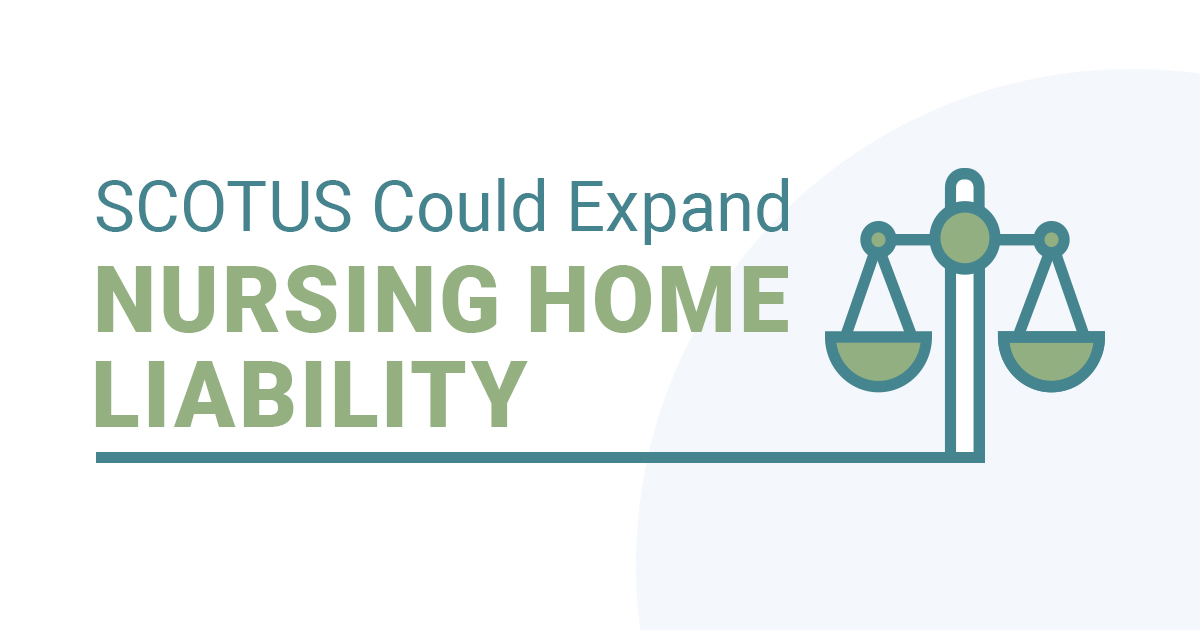
The U.S. Supreme Court recently agreed to review a case that could open government-owned nursing homes to greater legal risk.
In May, the high court granted review in Talevski v. Health and Hospital Corporation, et al., a lawsuit an Indiana couple brought in federal court in 2019 against a Valparaiso, Indiana nursing home for alleged violations of the Federal Nursing Home Reform Act (FNHRA).
The long-term care industry is watching the case closely because it could potentially provide plaintiffs with a new means for recovering damages against government-owned nursing homes, should the court agree with a 2021 federal appeals court ruling in the case. Before that ruling, plaintiffs could only sue nursing homes using state law claims of negligence or medical malpractice.
Gorgi Talevski and his wife, Ivanka Talevski sued Valparaiso Care and Rehabilitation, where Gorgi was a resident. The facility’s owner, the Health and Hospital Corporation of Marion County, was also included in the suit. The Talevskis filed under a federal civil rights law, 42 U.S.C. Section 1983, asserting violations of Gorgi Talevski’s rights under the FNHRA.
The FNHRA was enacted in 1987 as part of the Omnibus Budget Reconciliation Act approved by Congress. The landmark legislation established the minimum standards of care that nursing homes must meet to receive federal Medicaid dollars and rights for nursing home residents.
Two of the rights at issue in the Talevskis’ suit are the right to be free from chemical restraints imposed for purposes of discipline or convenience rather than treatment and the right not to be transferred or discharged unless certain criteria are met.
The plaintiffs allege that Valparaiso Care failed to adhere to the law by unnecessarily administering Gorgi Talevski psychotropic medications, which the couple believe led to his rapid mental and physical decline. Additionally, they maintain Valparaiso Care discharged and transferred Gorgi without the family’s consent.
In 2020, a federal judge dismissed the case after finding the FNHRA does not provide a private right of action for suit under Section 1983, which the Talevskis appealed to the U.S. Court of Appeals for the Seventh Circuit.
Judge Diane Wood, who wrote the opinion for the court, said that the U.S. Supreme Court has emphasized that plaintiffs seeking damages for an alleged violation of a statute through a section 1983 claim must assert the violation of a federal right, not just a violation of federal law.
The Supreme Court’s 1997 ruling in Blessing v. Freestone sets out a three-factor test for determining whether a federal law creates private rights that are enforceable under Section 1983:
- Congress must have intended that the provision in question benefits the plaintiff
- The plaintiff must show the right is not so “vague and amorphous” that its enforcement would strain judicial competence, and
- The statute must unambiguously impose a binding obligation on the states
The 7th Circuit concluded that the residents’ rights provisions of the FNHRA unambiguously confer individually enforceable rights on nursing-home residents like Gorgi Talevski and reversed the lower-court ruling, allowing the case to proceed.
The nursing home further appealed the case to the Supreme Court, which will take up the case in its next term.
Industry groups like the American Health Care Association have filed friend-of-the-court briefs urging the Supreme Court to uphold the initial dismissal of the case. The AHCA argued in its brief that the 7th Circuit’s decision results in disparate treatment of similarly situated participants in Medicare and Medicaid programs “whereby public participants in both programs are subject to greater litigation risk than their private counterparts for allegedly violating the same participation requirements.”
Court watchers note that if the Supreme Court agrees with the 7th Circuit, the result could be financially onerous for government-owned nursing homes, especially because these lawsuits could result in significant verdicts against nursing homes that are outside of any statutory damages caps, plus the award of attorneys’ fees.
Whichever way the court decides, the ruling is expected to have an outsized impact on facilities in Indiana. Roughly half of the country’s 1,007 government-owned facilities are in Indiana, according to the Indianapolis Star. Further, about 90 percent of the state’s nursing homes are owned by county hospitals.
Med Law Advisory Partners is continuing to monitor this case and its effects on the nursing home industry.
For 20 years, Med Law has worked with plaintiffs, defense counsel, and owners/operators of senior-living care facilities in litigation investigation and case preparation. Guided by their direct experience in patient care and long-term care facility administration, our consultants conduct in-depth analyses of medical records and identify critical factors to help support or defend against allegations of negligence or malpractice against nursing homes.
Contact us to learn more about how we can work with you in your nursing home litigation.
Long-Term Care: Are Reforms on the Horizon?
Tuesday, June 7th, 2022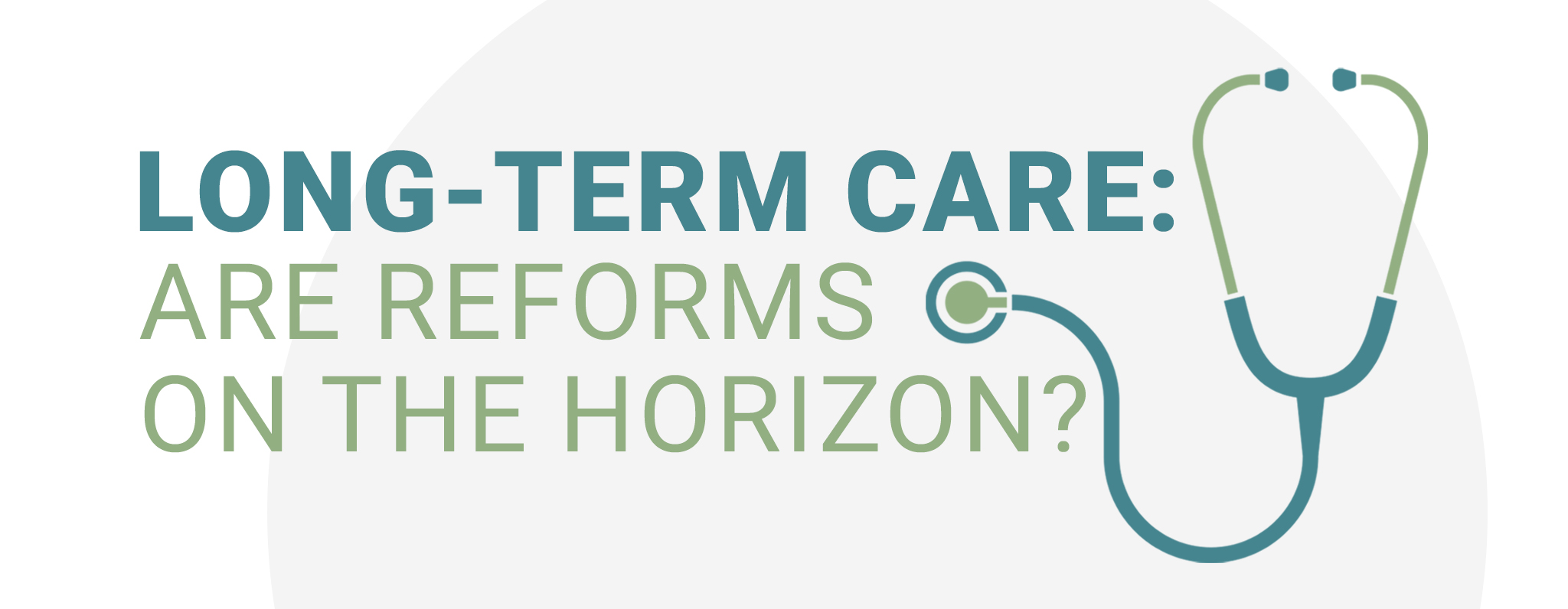
As the COVID-19 pandemic continues to wane, calls to reform one of the healthcare sectors hit hardest by it —the long-term care industry — are growing louder.
Older residents and people with disabilities were among those most vulnerable to COVID-19 and nursing homes often struggled to contain the virus. With the pandemic disproportionately affecting those who work or live in nursing homes, more than 200,000 residents and staff died as a result of COVID-19. The push for reform comes as the industry begins to take stock of the lessons learned during the pandemic.
In recent months, both the White House and a group of experts tapped by the National Academies of Science, Engineering, and Medicine (NASEM) have offered proposals to fix the systemic issues that often impede the delivery of high-quality care.
Those advocating for reform note that while many issues in the industry predate the pandemic, the pandemic has brought them to the forefront, and further underscored the need for change.
In this article, we will detail the proposals and recommendations put forward, the industry’s response, and what reforms could mean for litigation.
Federal Reforms
In February, President Joe Biden announced a set of reforms and proposals to improve nursing home care. Some reforms can be put into place through administrative rule-making, while others will require Congressional approval.
Biden identified three overarching goals: to improve the safety and quality of nursing home care, to hold nursing homes accountable for the care they provide, and to increase transparency surrounding nursing home ownership.
He announced that the Centers for Medicare & Medicaid Services (CMS) will launch several new initiatives, including establishing minimum nursing home staffing requirements.
Biden said CMS will conduct a study to determine the level and type of staffing needed to ensure nursing home residents get safe and quality care and will issue proposed rules on staffing within the next year.
“Establishing a minimum staffing level ensures that all nursing home residents are provided safe, quality care, and that workers have the support they need to provide high-quality care,” he said. “Nursing homes will be held accountable if they fail to meet this standard.”
CMS will also seek to phase out shared rooms in facilities, launch a new effort to ensure residents aren’t being over prescribed antipsychotic medications, and strengthen the Skilled Nursing Facility Value-Based Purchasing Program, which gives incentive funding to facilities based on their performance.
Biden’s proposals that include either the levying of penalties or budgetary needs will require the approval of Congress.
In this area, Biden has called on Congress to fund a nearly 25 percent increase in CMS’s budget, $500 million, to pay for more health and safety inspections at nursing homes.
Biden is also eying increasing financial penalties for poor-performing facilities, calling on Congress to raise the dollar limit on per-instance financial penalties it can levy on poor-performing facilities from $21,000 to $1 million.
That marks a major shift from the previous presidential administration, which lowered penalty amounts by imposing a one-time fine rather than a per-day fine. Under Biden’s reforms, CMS will explore making per-day penalties the default penalty for failing to comply with federal guidelines, he said.
In line with his priority to provide more transparency to the industry, Biden is calling for the creation of a database of nursing home owners and operators, and for HHS to implement Affordable Care Act requirements regarding transparency in corporate ownership of nursing homes.
Additional proposed reforms center on strengthening the nursing home workforce, ensuring nursing homes are prepared to respond to emergencies and pandemics, and studying the impact of private equity ownership.
On the latter, the White House noted that private equity ownership has ballooned from $5 billion in 2000 to more than $100 billion in 2018. Private equity firms own 5 percent of all nursing homes in the U.S., the White House said.
Biden was critical of private equity ownership in nursing homes, noting research that has found resident outcomes are significantly worse compared to other ownership models of nursing homes.
NASEM Recommendations
Nearly two months after the White House announced its reforms and proposed reforms, NASEM issued a report concluding that “the way the United States finances, delivers, and regulates care in nursing home settings is ineffective, inefficient, fragmented, and unsustainable.”
The report was assembled by a committee of experts that convened in fall 2020 to study how the U.S. delivers, finances, measures, and regulates the quality of nursing home care.
The committee reached several overarching conclusions from their study. One of which is that the nursing home sector has suffered from decades-long underinvestment in the quality of care and a lack of accountability for how its resources are allocated. Additionally, the committee noted immediate action is required to make fundamental changes to the industry.
The committee made several recommendations for these changes, including some that overlap with the president’s proposals. One of its biggest recommendations is the creation of a federal long-term care benefit, which could resolve the existing system of paying for care, which the committee called “highly fragmented.”
While the committee acknowledged creating a new benefit would be politically challenging, the group said it’s the best solution for increasing access to long-term care and guaranteeing payment rates are adequate to cover the expected level of quality.
The group also called for:
- Collecting, auditing and making detailed facility-level data on finances, operations and ownership of all nursing homes publicly available
- Implementing strengthened oversight across facilities with a common owner
- Denying licensure and imposing enforcement actions on owners with a pattern of poor quality care across multiple facilities
- Incentivizing the use of electronic healthcare information technology
In its concluding remarks, the committee noted that it has been 35 years since the passage of the Nursing Home Reform Act, a landmark nursing home reform law. The group warned that the failure to act on its recommendations will guarantee the continuation of the conditions that prevent the delivery of high-quality care in all nursing homes.
“It is of the utmost importance that all nursing home partners work together to ensure that residents, their chosen families, and staff will no longer have to wait for needed improvements to the quality of care in nursing homes,” the committee said in the report. “The time to act is now.”
Industry Response
The American Health Care Association, which represents more than 14,000 nursing homes and long-term care facilities in the U.S., issued a statement in response to Biden’s announcement.
The group’s president and CEO, Mark Parkinson, noted improvements in the industry in the last decade, prior to the pandemic, and said increasing oversight without additional assistance will not improve care.
“To make real improvements, we need policymakers to prioritize investing in this chronically underfunded health care sector and support providers’ improvement on the metrics that matter for residents,” he said.
Last year, the ACHA and LeadingAge, a group representing aging services providers, announced their own reform agenda, encouraging passage of their Care for Our Seniors Act.
Many of the proposed bill’s recommendations are in line with recommendations from the committee and the White House.
The groups are calling for state and federal lawmakers to provide more financial resources, including increasing federal Medicaid funding to the states and bringing Medicaid rates up to the cost of care.
They are also seeking to address worker shortages through incentive programs like tax credits, loan forgiveness for workers, and assistance with both housing and childcare costs.
The proposed law has not yet been introduced in Congress.
Litigation Implications
New requirements for nursing homes will likely lead to additional litigation risk for nursing home owners and operators.
Healthcare attorneys are already anticipating an increase in the number of COVID-19-related cases against nursing homes before states’ statutes of limitation runs out. A New York attorney recently told Skilled Nursing News that she expects federal and state initiatives to address staffing levels will lead to even more claims against nursing homes.
While it is unclear whether Congress will approve legislation making fundamental changes to the system, nursing homes and other post-acute care facilities are already operating in an environment in which litigation is increasing and there are pressures to keep costs contained.
As long-term care facilities continue to face challenges in resourcing and demand coupled with a changing regulatory landscape, it’s important for leadership teams to have expert support to navigate forward. Med Law Advisory Partners has nearly 20 years of experience with long-term care facilities on both fronts, both assisting in the investigation of claims for merit and in preparing cases for litigation.
Our consulting nurse experts bring to their cases extensive expertise in direct patient care and administration in long-term care facilities. In each case, our team conducts a deep-dive analysis of the records, provides an initial opinion of liability, and provides a roadmap to facilitate the prompt resolution of the case. They are deeply familiar with the issues and guidelines unique to post-acute care claims.
Contact us today to learn more about how Med Law can partner with your long-term care facility.
Pandemic Aid is Running Out: How to Make the Most of Your Litigation Budget
Thursday, June 2nd, 2022
Safety-net hospitals kept afloat by billions in federal COVID-19 relief aid are set to lose a major lifeline as those funds run out and Congress remains at an impasse over new funding.
Early in the COVID-19 pandemic, Congress provided $175 billion in subsidies to healthcare providers through the Coronavirus Aid, Relief, and Economic Security (CARES) Act, the Paycheck Protection Program, and Health Care Enhancement Act. Congress approved additional funding last year through the American Rescue Plan Act, including $6 billion for community health centers.
The political will to provide more support appears to be flagging, however, as Congress has yet to approve more funding for healthcare providers.
Disagreements over how much aid, and to whom it should be given, largely fall along partisan lines. While the White House and Senate Democrats have argued that more funding is needed, Senate Republicans assert the pandemic has entered a new, endemic phase and no longer requires significant funding.
In March, the White House sought a $22.5 billion aid package, a figure that was reduced to $16 billion before talks fell through, the Washington Post reported.
Senate negotiators next reached a $10 billion deal boasting bipartisan support, but without broader Republican support, the bill has remained in limbo.
Congress’s failure to pass new aid has officials at safety-net hospitals like Nashville General Hospital in Nashville, Tennessee, concerned. The New York Times recently reported on how pandemic relief has helped the hospital, which predominantly serves low-income and uninsured populations, stay open during the pandemic.
Federal aid is ending at a particularly fraught time: just as safety-net hospitals are beginning to address the impacts of delayed care during the pandemic. The hospital’s doctors say they are seeing a surge in patients with more complicated issues stemming from delayed care, missed screenings and stretching out medications like insulin.
Nashville General Hospital’s story isn’t unique among healthcare providers. A recent study released by the JAMA Health Forum showed that federal COVID-19 relief effectively offset hospitals’ operational losses during the pandemic, especially government-run, rural and smaller hospitals.
For hospitals that have relied on COVID-19 funding to get by, the loss is likely to be especially acute. The financial pressures associated with the loss of federal aid, coupled with existing trends like the rise in medical malpractice claims against healthcare organizations and rising claim values, will require healthcare organizations to contain their costs and maximize their legal budgets.
Hospitals, health systems and other healthcare organizations may begin exploring partnerships with outside vendors as a way to expand their in-house capacity to respond to litigation and better align their often-siloed legal, quality assurance, and risk management initiatives.
If your organization is considering a partnership to support litigation readiness, consider one with in-depth experience working directly with healthcare providers to broaden internal capacity for medical-legal case investigation, determine the level of exposure based on merit, and facilitate a roadmap towards prompt resolution of claims. It can be especially helpful to engage with a group that has worked extensively in the analysis of medically complex cases, patient safety events, surgical and perinatal care outcomes, and identifying failures in systems and processes.
When exploring potential partnerships, ensure your vendor not only has the medical expertise you need but also provides the right approach to achieving optimal outcomes.
Med Law’s Approach
When partnering with healthcare organizations, Med Law works in alignment with the full team to ensure they receive the highest return from their litigation expenditures. As experienced vendor-partners, the Med Law’s approach is to deliver early claim assessment and valuation, giving in-house legal teams breathing room to tackle high-level strategy. With this approach, when organizations engage outside counsel, they are given a head start by the early work completed by Med Law, including receiving indexed medical records and reports, an initial opinion regarding liability, and areas of focus. This approach also offers partners an opportunity to contain litigation costs so that they can have predictable, controlled budgets and expenses.
Beyond litigation readiness, healthcare organizations may want to take a proactive approach to identify areas of concern via outside resources. In cases like this, Med Law’s consulting nurse experts partner with organizations to proactively identify and respond to areas of concern and integrate insights with their quality and patient safety agenda.
Our executive consulting team has the expertise to capture vital information derived from extensive data collection, discern trends, identify system defects, and advise strategic options.
Contact us for more information on how Med Law can help broaden your internal capacity to respond to litigation.
What Hospitals Can Learn from the RaDonda Vaught Case
Sunday, May 22nd, 2022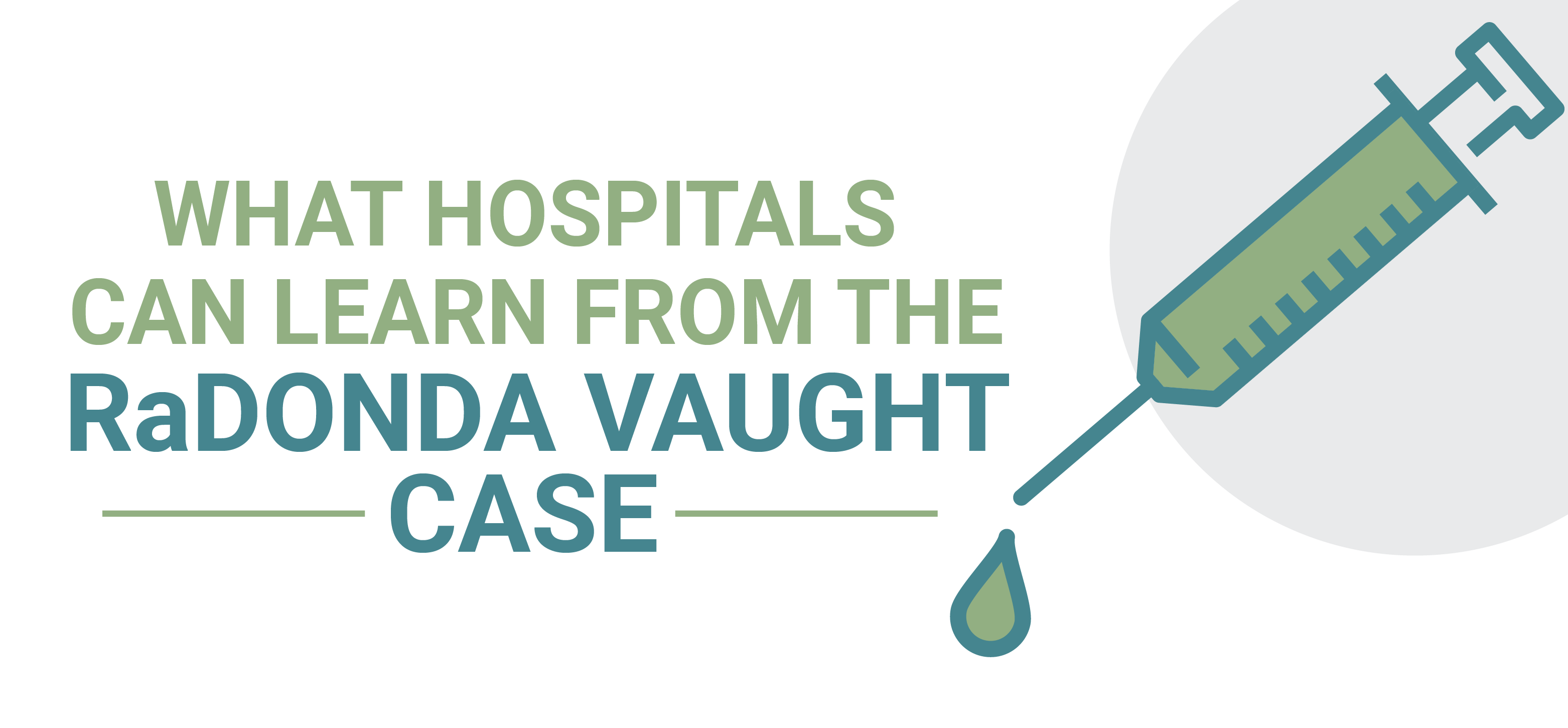
The criminal prosecution of former Tennessee nurse RaDonda Vaught sent shockwaves throughout the United States’ healthcare community.
On May 13, nearly two months after she was convicted of gross neglect of an impaired adult and criminally negligent homicide for administering the wrong drug to a patient, a judge sentenced Vaught to three years of supervised probation.
Vaught’s case has gained national attention as a rare instance of a nurse being held criminally liable for a medical error.
The case goes back to December 2017 when, as a nurse at Vanderbilt University Medical Center in Nashville, she administered the wrong medication to Charlene Murphey, a 75-year-old woman who sought care for bleeding in her brain.
According to Becker’s Hospital Review, legal documents show Vaught completed an override of the electronic medication cabinet after she was unable to access the drug she was meant to give Murphey, Versed, a sedative. She entered an override and accidentally withdrew vecuronium, a paralytic, instead. Vaught administered the wrong drug to Murphey, who died from the medical error.
Vaught admitted the error to the hospital immediately. The hospital terminated her employment in 2018. Initially, the Tennessee Department of Health did not seek to revoke her license, but later reversed course. The state nursing board revoked her nursing license in 2021.
Vaught’s criminal case has alarmed nurses across the country. They say the handling of Vaught’s case will make other patients less safe.
Following the conviction, the American Nurses Association and Tennessee Nurses Association released a statement saying they are “deeply distressed by this verdict and the harmful ramifications of criminalizing the honest reporting of mistakes.”
“[Healthcare] delivery is highly complex. It is inevitable that mistakes will happen, and systems will fail. It is completely unrealistic to think otherwise,” the groups said in their joint statement. “The criminalization of medical errors is unnerving, and this verdict sets into motion a dangerous precedent.”
Vaught echoed those concerns in her sentencing hearing, noting the impact her prosecution will have on other nurses.
“This sentencing is bound to have an effect on how they proceed both in reporting medical errors, medication errors, raising concerns if they see something they feel needs to be brought to someone’s attention,” she said. “I worry this is going to have a deep impact on patient safety.”
Here are our two takeaways for hospitals from Vaught’s case.
1. Supporting Clinical Staff is Vital to Safety Outcomes
Nurses are understandably concerned about the Vaught case and what it might mean for them if they make a serious mistake on the job. Some nurses have cited the case as their reason for leaving nursing altogether, others may feel disinclined to self-report errors.
Hospitals should consider how they can better show support for clinical staff and maintain open lines of communication with them. Groups like the Patient Safety Movement Foundation are calling on hospital leaders to encourage staff to share their near misses.
“Healthcare workers are human and healthcare systems need to ensure there are appropriate processes in place to provide their staff with a safe and reliable working environment so they can provide their patients with the best care,” the group said in a statement provided to Becker’s Hospital Review following Vaught’s sentencing. “Only by identifying potential problems and learning from them can change occur.”
2. Hospital Data Should Drive Safety Conversations
While it’s important for hospitals to have structures in place to review medical errors and develop plans to respond to them, it’s not enough to simply react to incidents. Hospitals also need to take a proactive stance and identify issues before they lead to adverse events.
Data can be a powerful tool for hospitals as they navigate patient safety issues. By reviewing hospital records, leaders can glean more insights into areas of weakness in an organization and take action to improve them, ultimately improving patient care and reducing exposure to liability as well.
Med Law Advisory Partners’ executive consulting team works with hospitals to conduct deep-dives into their records and provide hospital leaders with clear-eyed assessments and actionable guidance.
Med Law consultants have the necessary expertise to capture vital information derived through extensive data collection, discern trends, identify areas of concern, and provide strategic opportunities for improvement. Med Law provides executives and boards unique intelligence and guidance that supports the reliability of systems, improves patient outcomes, reduces financial risk, and strengthens the healthcare workforce.
Contact us today to learn more about how Med Law can partner with your healthcare organization to create a culture of greater patient safety.
Get to Know Legal Nurse Consultant: Teressa Crawford
Tuesday, May 17th, 2022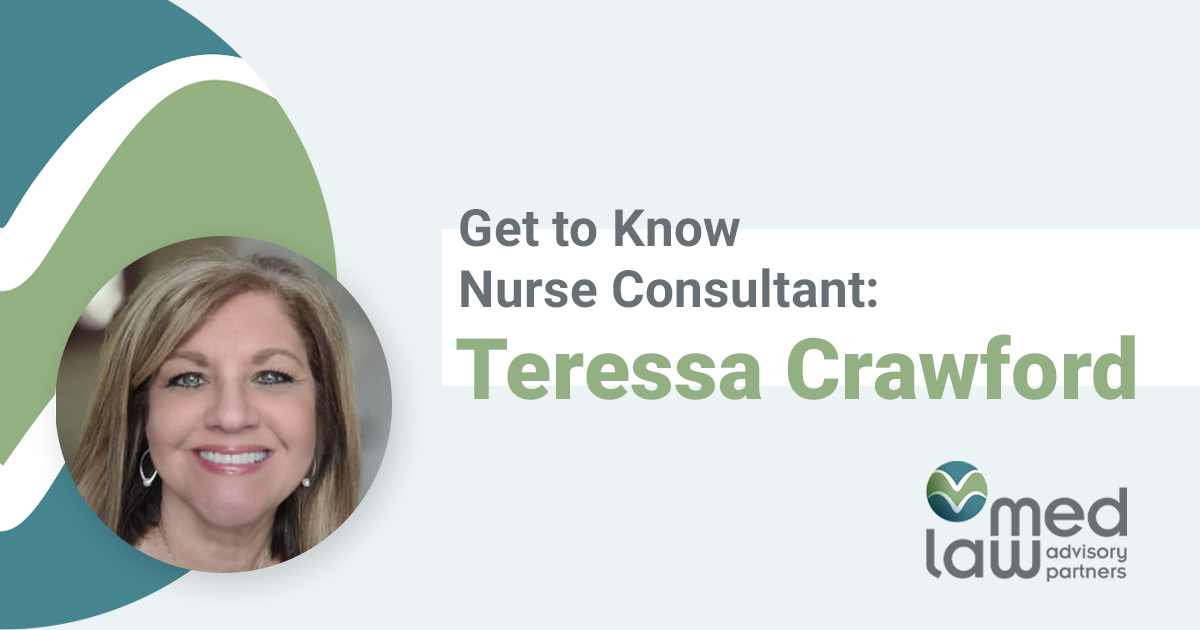
Meet Teressa Crawford, one of the experienced legal nurse consultants at Med Law. Teressa has practiced as a registered nurse for almost 30 years. In her nearly 25 years of long-term care experience, she has served as director of nursing services and liability risk manager. Teressa is a valued member of our team, get to know her in this spotlight:
Name, title, city you are based in:
Hot Springs, Arkansas
What is your role at Med Law Advisory Partners?
Nurse Consultant
What did you do before working for Med Law Advisory Partners?
Immediately prior, I was doing travel nursing as a DON in long term care mostly on the east coast; prior to that I served as DON of long term care facilities are the correct answers
Why do you do this type of work?
I enjoy the challenges it presents, especially the challenge of pulling everything together into a report that others who aren’t in the medical field can understand and use it in the litigation process.
Do you have a specific area of expertise that you are the most fond of?
Long term care and hospice
In your opinion, what is the most rewarding aspect of your job?
The most rewarding aspect of my job working as a nurse consultant is the “finding the needle in the haystack” moment. I feel like a CSI investigator going through the records, searching for all of the puzzle pieces to support or refute allegations.
Tell us about a time you had to overcome a challenge or obstacle within being a legal nurse consultant – how did you overcome this/what did you learn?
Finally understanding “the process” of the review, how to compartmentalize the different areas of the review while keeping the whole thing intact within the puzzle frame. Then after finding and adding all of the puzzle pieces, we have the whole picture within the frame and can present the complete picture to the client. I overcame this by doing like Dori from “Nemo” said, I just kept swimming. From that, I learned to try and try again because there is strength through the struggle and success will eventually come.
What is something in the healthcare industry that comes to mind that you would like to see improved or changed?
Always better/consistent care in long-term care facilities. There are some great facilities out there but sadly we only ever hear of the ones that aren’t.
What are you most likely up to when you are off-the-clock?
Family. Fishing or hunting.
What is some advice you would give to nurses looking to pursue a career in legal nurse consulting?
Take what you know, listen to the advice of those who have “been there and done that” and use it to build on then add your own polish to it.
Interesting fact about yourself:
I’m a “PK” and for those who don’t know what that is, I’m a preacher’s kid. I wouldn’t trade that heritage for anything. So much good was not only taught but lived in front of me. My hope in life is that I will somehow pass those treasures to my children and grandchildren.
Underdeveloped Claims: How Early Investigation Can Help
Tuesday, May 3rd, 2022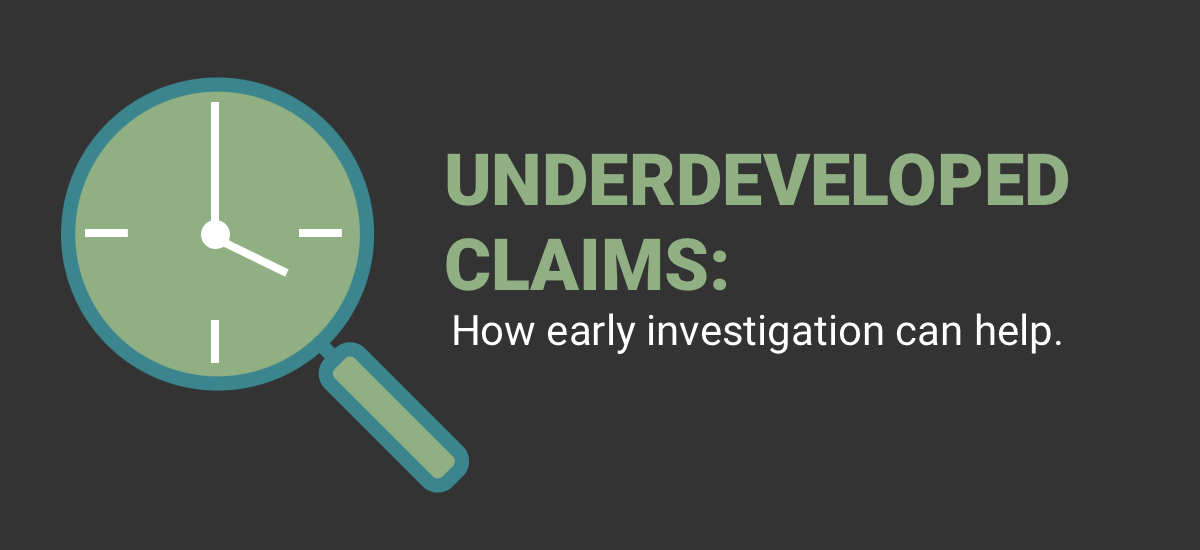
Developing a body of facts is a crucial aspect of litigation. Medical malpractice cases rise — and fall — on the fact record legal professionals obtain over the course of a lawsuit.
It’s common for attorneys and paralegals to fill the role of investigator, reviewing medical records and interviewing key individuals to sort out the facts of the matter.
Not having a complete, balanced picture of a case can lead to something no lawyer wants for their client: a weakened position in settlement negotiations and at trial. While legal professionals can, and often do, develop a deep understanding of their practice areas, there’s still a role that specialists can play in ensuring that no plaintiff’s claims are left underdeveloped.
Consider a now-closed case in which plaintiffs engaged Med Law Advisory Partners’ consulting nurse experts to perform a medical-legal investigation. The plaintiffs hired Med Law to do a deep dive into the care provided at the defendant facility after their settlement negotiations, more than a year after filing the case.
The plaintiffs alleged the facility allowed a patient’s Stage 3 pressure injury to develop while the patient was under their care. The defense argued that the breakdown of the patient’s skin existed before their admission to the facility, and the care rendered was proper. The defense further countered that the patient’s non-compliance contributed to their worsening condition.
As part of the investigation, Med Law reviewed the patient’s medical records to determine whether the facility’s nursing staff met the standard of care, the generally accepted measure of quality of care, related to the prevention and treatment of wounds.
What they found were several deviations from acceptable practice, including the following:
- Failure to properly document a complete skin assessment on admission
- Inaccurate and inconsistent Braden Skin assessments
- Failure to initiate a baseline and comprehensive plan of care for prevention and treatment of skin breakdown in a timely manner
- Failure to timely appreciate and communicate a change in skin condition to the treating provider
- Failure to timely and appropriately administer medications and nutritional supplementation in the presence of malnutrition and a Stage 3 pressure injury
- Failure to consistently administer wound care treatments in the presence of a Stage 3 pressure injury
Because these issues were not thoroughly investigated early in the claim, the plaintiffs did not fully understand the depth and breadth of the case before them, including the level of the defendant’s contribution to the patient’s injuries.
Our consulting nurse experts’ assessment helped the plaintiffs show that the patient’s skin breakdown was more likely not present at the time of their admission. Further, the analysis demonstrated a delay in developing a plan of care to prevent skin breakdown likely contributed to the development and worsening of a Stage 3 wound.
The case shows the importance of early-stage assessment and the value of engaging medical-legal experts to build out a case fully.
Attorneys have an ethical responsibility to provide diligent representation on behalf of their clients. This includes fully investigating claims and making sure that their case is well-developed. Med Law can help plaintiffs’ counsel gain a deeper understanding of their cases, setting them up for greater success.
Our medical-legal team is comprised of highly experienced legal nurse consultants and dedicated support staff. Our registered nurses have extensive clinical experience in the areas of acute/critical care, long-term care, health systems management and many specialty areas within the nursing profession. Additionally, 75 percent of our legal nurse consultants carry the Legal Nurse Consultant Certified (LNCC) certification, demonstrating their industry expertise.
This expertise allows us to conduct efficient, in-depth analyses of medical malpractice matters and develop strategic, data-driven reports that help inform the direction of litigation for our clients.
Contact us today to learn more about how we help plaintiffs in their litigation.
Med Law Ranked #1 in The National Law Journal’s Best of 2022
Friday, April 22nd, 2022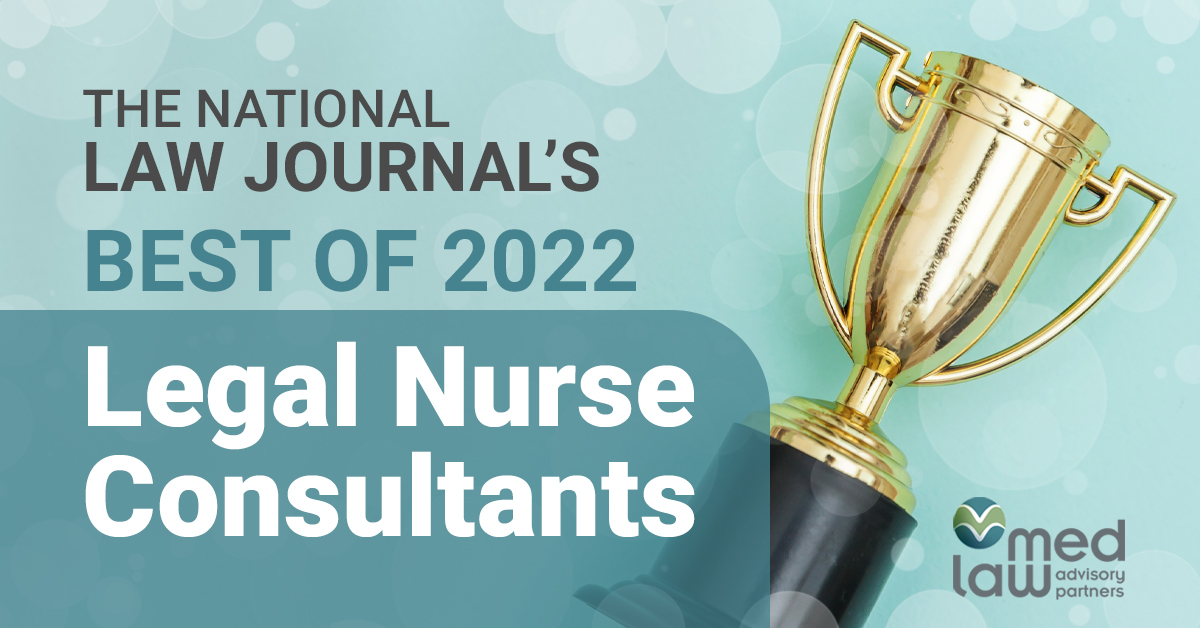
It is such an honor to be ranked #1 in The National Law Journal‘s Best of 2022. Best Of winners are featured in National Law Journal’s April issue, find us on page 14 along with fellow nominees. Thank you again to those who have supported us (past and present) in helping us achieve this milestone.
Med Law Advisory Partners Celebrates Our 20th Anniversary
Friday, April 22nd, 2022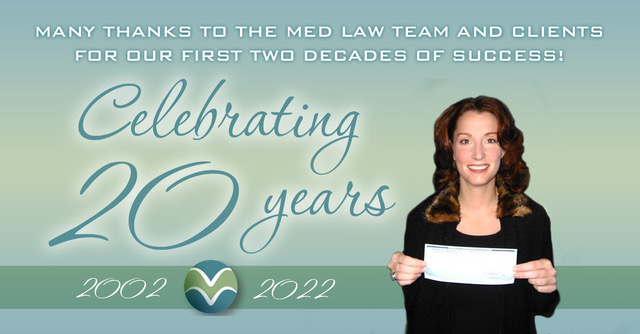
This week Med Law Advisory Partners will be celebrating our 20th anniversary. What an honor to have reached this milestone! Thank you to everyone who has helped us build Med Law into what it is today. We want to thank our clients who have partnered with us over the years to help us achieve our mission – positively impacting healthcare delivery. We also especially want to thank the hardworking and dedicated team at Med Law, past and present, for committing to this journey with us. We are excited for the future and what is to come.
Get to Know Legal Nurse Consultant: Lisa Hughes
Wednesday, April 13th, 2022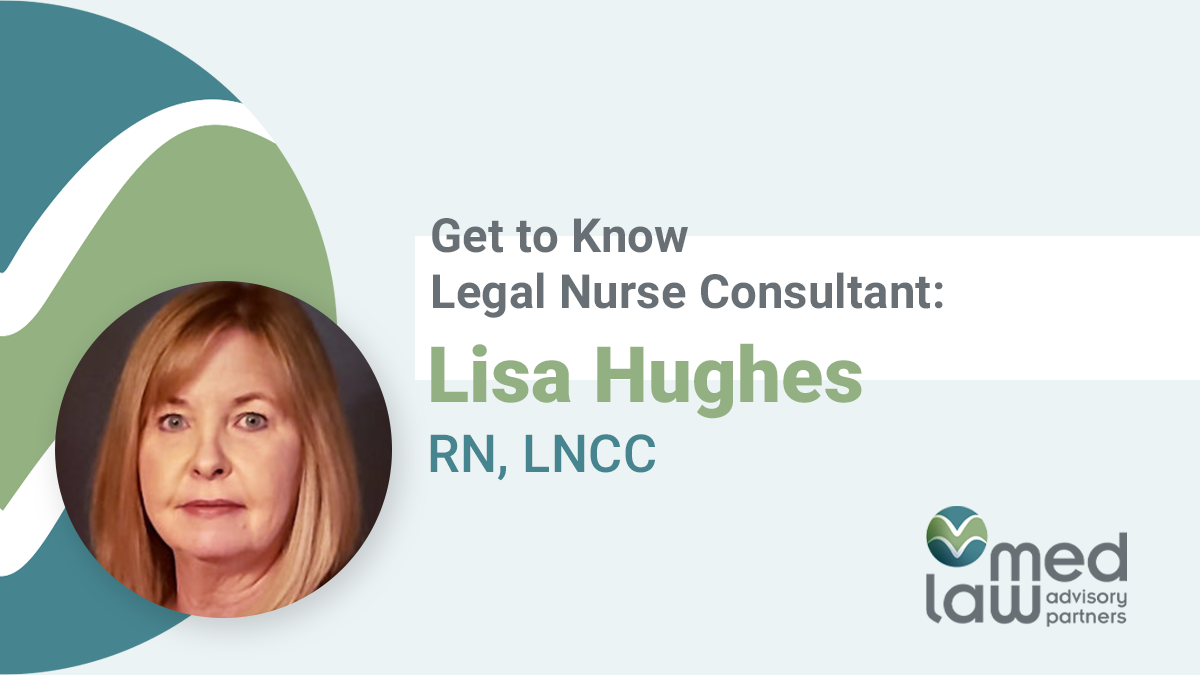
Name, title, city you are based in
Lisa Hughes RN, LNCC
Mangham, Louisiana
What is your role at Med Law Advisory Partners?
Legal nurse consultant
What did you do before working for Med Law Advisory Partners?
I have a 30+ year nursing career that includes medical-surgical and orthopedic nursing, long-term care director of nursing, home health care, risk management, and clinical reviewer for a supplemental medical review contractor.
Why do you do this type of work? Do you have a specific area of expertise that you are the most fond of?
I sincerely enjoy my work as an LNC. Long-term care cases are my favorite type of review because I have spent the majority of my nursing career in this area. I enjoy researching topics and regulations appropriate to each case.
In your opinion, what is the most rewarding aspect of your job?
To me, the most rewarding aspect of my job as an LNC is finding the crucial piece of the puzzle in the medical records for our clients that makes the difference in a positive outcome.
Tell us about a time you had to overcome a challenge or obstacle within being a legal nurse consultant – how did you overcome this/what did you learn?
The area of legal nurse consulting is always challenging, which makes it so interesting. Through my years working as an LNC I have learned to pay close attention to details. Those details have often made a huge difference in the outcome of many cases I have reviewed.
What is something in the healthcare industry that comes to mind that you would like to see improved or changed?
I would like to see more stringent monitoring of healthcare providers who abuse our current system and in turn the patients who have placed their confidence in those providers. The elderly population is where my heart is and I think that our healthcare system is often difficult for them to maneuver through.
What are you most likely up to when you are off-the-clock?
I’m very rarely off the clock, when I am, I like to spend time with my family and friends. I also love to travel and have a rather lengthy bucket list of places that I would like to visit.
What is some advice you would give to nurses looking to pursue a career in legal nurse consulting?
Find a mentor. I had the BEST mentor when I began my career in legal nurse consulting who taught me so much about this area of nursing. I will forever be grateful to her for all she taught me.
Interesting fact about yourself:
When we can, my husband and I spend time at the beach and love deep-sea fishing. I also enjoy antique shopping and searching for treasures.